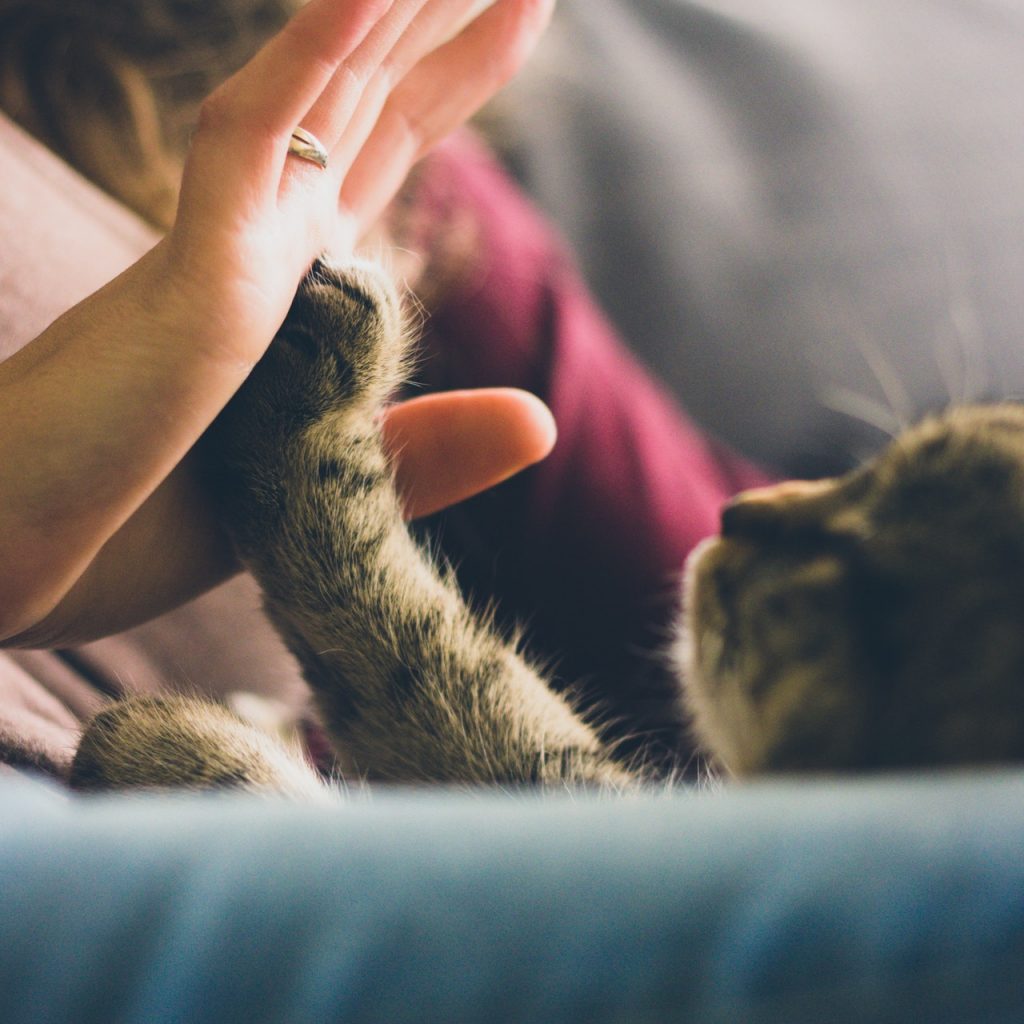
Animal Chiropractic Care
Spinal manipulation has been around for centuries as part of traditional medicine and body care in many cultures, even in animals. Within the last century, a modern form of spinal manipulation and adjustments formed under the Chiropractic discipline in the Western hemisphere. Chiropractic care is best suited for animals with biomechanical (motion) disfunction and some neurologic issues.
Conditions to seek chiropractic care:
If your cat or dog experiences any of these symptoms, they may benefit from chiropractic care.
- Yelping in pain after a sudden movement when no other symptoms are present
- Weak front legs with no site of pain
- Looking, yelping or biting when being picked up around the chest area
- Hunched back or muscle spasms along the back
- Holding his/her head in an awkward position
- Having trouble looking up or even eating
- Stopped playing with favorite toys or friends
- Seeming grumpy and disinterested in life
- Hip pain in hind legs
- Trouble standing or laying down
- Inability to jump

What is spinal manipulation or animal chiropractic?
Veterinary spinal manipulation is equivalent to chiropractic care but performed by licensed veterinarians on animals. Animal chiropractic care is a gentle treatment to release joint surfaces that are not moving well. This is done through very controlled and precise movement with high velocity and low amplitude thrust applied in the joint’s normal plane of movement. This movement, if successful, causes a cascade of events by stimulating muscle spindle cells, releasing entrapped synovial folds, and increasing motion of the joint. These spinal adjustments cause a cascade of neurological responses that release biochemicals that relieve pain. Therefore, our goal is to restore normal biomechanics to the spine and limbs, decrease pain, and support the musculoskeletal and nervous systems.
Only veterinarians and chiropractors trained and certified in animal chiropractic and spinal manipulation should perform this treatment modality to avoid serious injury.
Why the use of "spinal manipulation" and "chiropractic" terms?
Only those with a Doctorate in Chiropractic (DOC) can be called a chiropractor. They experts licensed in treating humans. However then same techniques are used in animals. Many states have laws and statutes preventing other professions from using their professional term. Therefore a veterinarian cannot call themselves a chiropractor and a chiropractor cannot call themselves a veterinarian, although they may be certified in animal chiropractic care. These rules and regulations are in place to protect the public.
Why is spinal care important?
The spine houses the spinal chord. A majority of the spinal cord segments exit between the bones of the vertebrae to innervate every aspect of the body. Altered mobility of the spine, caused by anything from tight muscles, entrapped synovial folds, disc issues, arthritis, etc, can cause pain, referred pain, limping, changed stride, poor performance, decrease fertility, urinary and fecal incontinence, diarrhea, among others. Even in younger animals, small changes in biomechanics can lead to decrease athletic performance, arthritis, and strains on muscles and tendons.
During your pet’s exam, we take a thorough history, assess the gait and palpate the spine, joints and muscles for heat, tension, pain, tone, and any asymmetry. Areas that are restricted may be adjusted.
Patient Benefits
There are many benefits to chiropractic adjustment. Pet caregivers may notice improvement in gait and mobility immediately after adjustments. Geriatric pets may have improved mobility, decreased stiffness, and generally appear more comfortable.
Depending on the condition, pets may need several sessions. The pet will likely need to be seen once a week for 3-4 weeks in a row. The need for additional sessions depend on response to treatment.
For more information, see the College of Animal Chiropractors (https://www.collegeofanimalchiropractors.org/en/) or the American Veterinary Chiropractic Association (https://www.animalchiropractic.org/).
